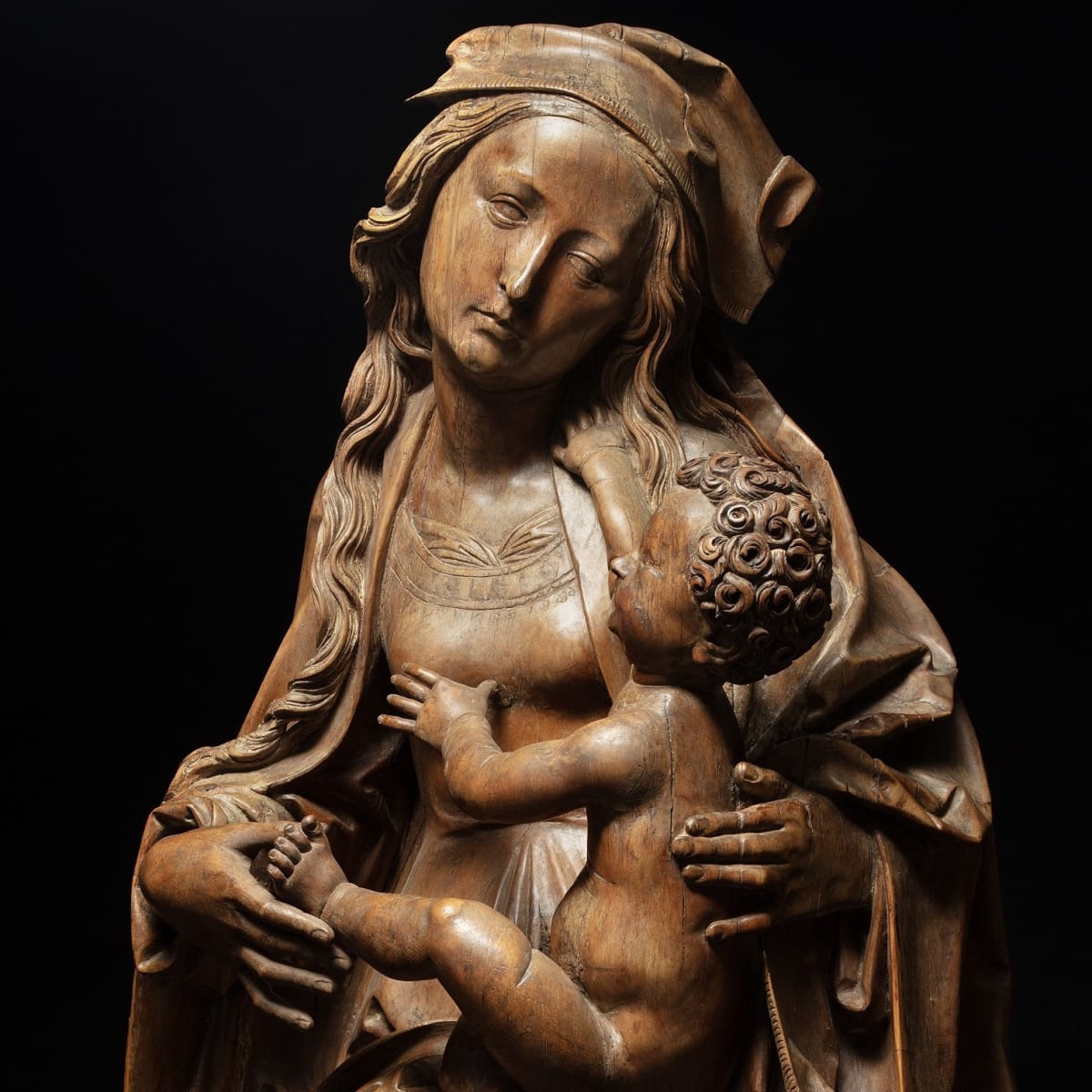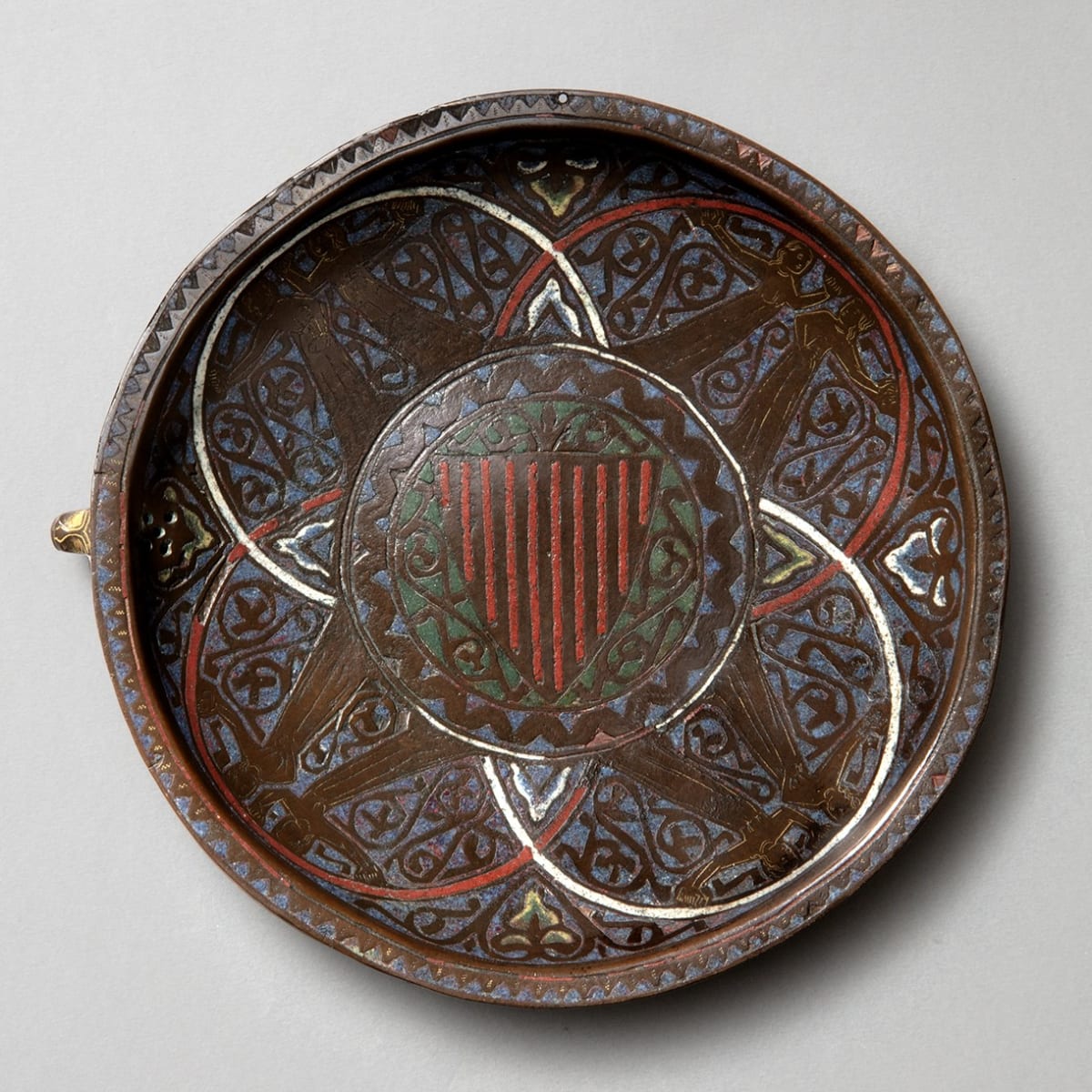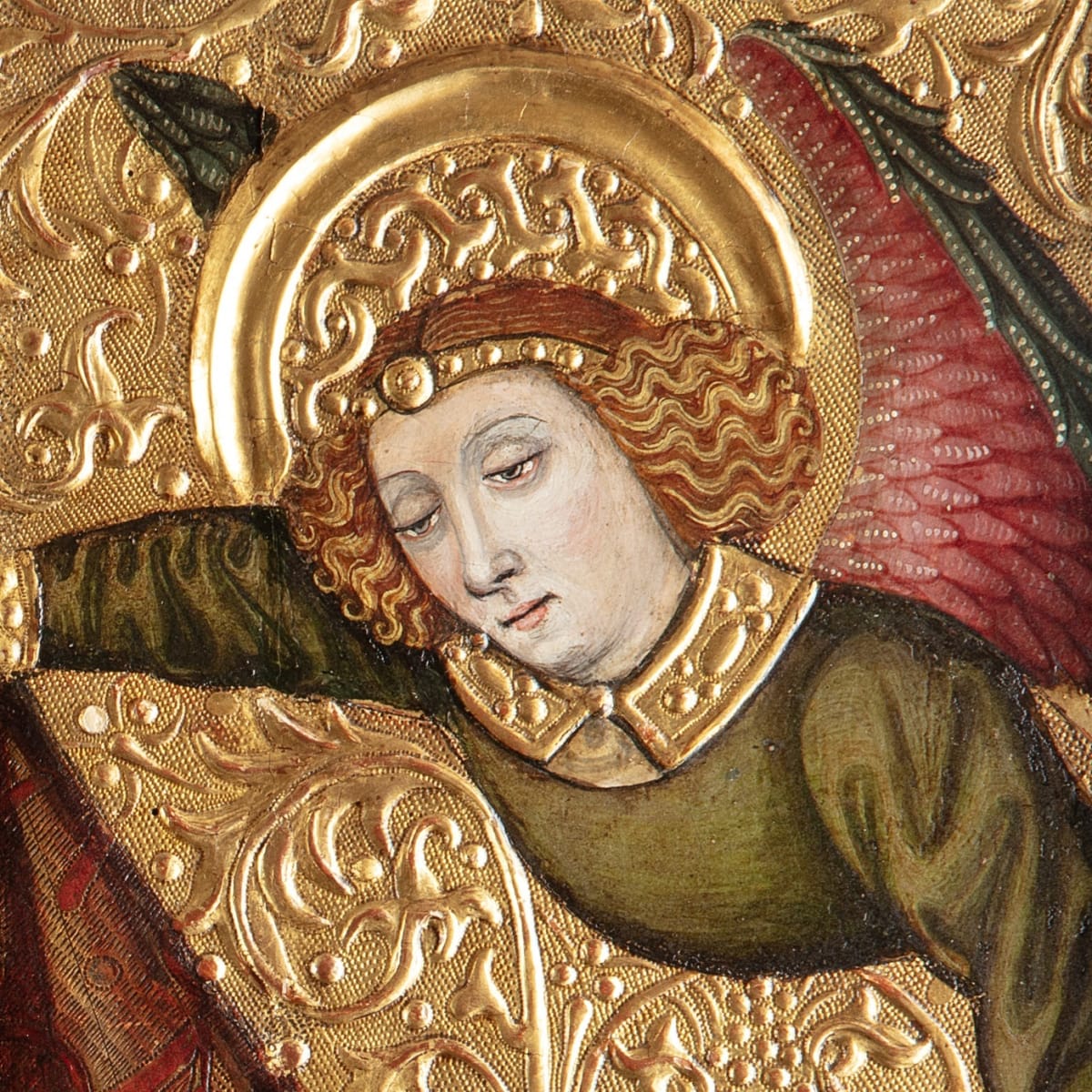
A Queen Saint (Etheldreda?) accompanied by two kneeling donors
Alabaster carvers working in the years around 1500 brought to bear on their work a remarkable stylistic idiom quite removed from the frenetic detail favoured by their forebears. Alabasters produced in this final period, which was to be cut suddenly short by the Reformation and ban on religious images in 1540s England, are at once crisply austere, and fully and generously proportioned. An almost totemic sense of symmetry, monumentality, and stasis came to reign supreme. Broad, restrained drapery folds that fall in pleats with little frill or fancy, a robust and almost geometric linearity to attributes and limbs, and a carefully honed essentialism that defines arrow-like noses on full faces.
This late fifteenth-century relief depicts Saint Etheldreda, standing straight-on to the viewer with two kneeling and praying donors (most likely husband and wife) shown in miniature at her sides. Etheldreda (Aethelthryth in Old English), the daughter of King Ina of the East Angles, and foundress and abbess of Ely, was the most widely venerated of all medieval English female saints, with more vernacular accounts of her life to her name than any other. Born in c. 636 A.D., she married twice, first to Tondbert, an ealdorman of South Gyrwas (modern-day Fens), and then for the sake of a political union to Ecgfrith of Northumbria. Wanting to remain a virgin she refused to consummate either marriage. However, when Ecgfrith attempted to enforce his marital rights, Etheldreda fled to Ely, where in 673 she founded a double monastery on the site of what is now Ely Cathedral, and which flourished for over two centuries until its ruination during the Danish invasion. She is traditionally depicted with a book and crosier, clothed a veil and wimple pinned over her hair by a crown – attributes that overlap perfectly both with the present relief and with how she is represented on other English alabasters surviving from the late fifteenth century.
There are only a small handful of English alabasters surviving from the late Middle Ages that include sculpted figures of donors in their compositions. Important early examples include a c. 1370 statue of Saint Peter excavated at the site of Flawford Church in 1779 (now in the Nottingham Castle Museum) and a magnificent Trinity in the Boston Museum of Fine Arts. But it is telling that across both of his authoritative and still canonical surveys of English medieval alabasters, Francis Cheetham illustrates only three single standing saints accompanied by kneeling donors. Our figure, which has only recently re-emerged to scholarship, is a new addition to this tiny group.





